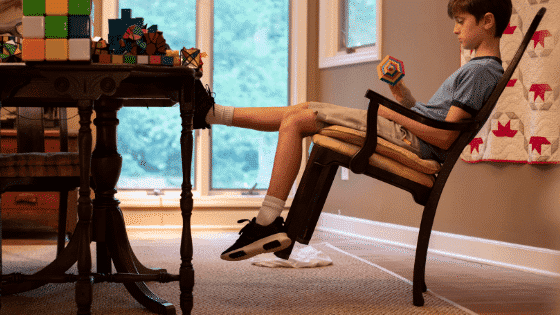Say the word “tantrum” and most likely you imagine a small child, arched-backed, screaming then throwing themselves on the floor.
But what if not all tantrums look like that?
For tweens, they often don’t.
Tween tantrums looks like defiance.
We know that when children “tantrum,” they are overcome by their feelings. We perhaps see this most regularly with toddlers, who seem to cry and scream with abandon. And so they should. Tantrums are a normal, psychological part of development, and the body’s natural way to relieve stress. We’ve all seen that calm happen once the big outburst clears.
But we are lead to believe that tantrums disappear after the toddler phase.
And they don’t.
They don’t even disappear for us!
How often have you sat in your car, running late for an appointment, hunting for a place to park. Tension mounts as the clock ticks and still no spot appears.
Until… The silver Honda two vehicles along is edging out. Yes! You are primed for that space and ready to snag it when a truck appears in the opposite direction, swerves in and parks. “Holy 3@X!”
After your appointment, you grab groceries at the store. Your bag breaks and your apples and go rolling across the car park.
To try and feel better you treat to yourself to a coffee. You take a first gulp, burn your lip, and end up with stains down the front of your shirt. The lid wasn’t on properly!
So, when your partner calls to say that date night has to be cancelled because work will run late, you really let them know you aren’t happy:
You holler.
You kick the streetlamp (which really hurts!).
And you hang up.
There.
Hmmmn.
We have tantrums too!
So it hardly seems realistic to think your 4, 5 or 6 year old will stop tantrumming, and the same goes for your 9, 10, 12 year olds.
But a tween tantrum may look very different from a toddlers tantrum despite the reasons and the feelings behind them being the same.
We Can’t Stop Tantrums

Many times tantrums happen when the quest for autonomy isn’t granted, and it’s true that after turning three independence grows. But at 4, a toddler can’t choose what to eat everyday. They have to ask permission to watch devices or go meet a friend.
All of that is fine, of course. But it isn’t autonomy.
And what about emotions?
You may be a big boy or girl of three or four, but that doesn’t mean that suddenly you want to share your most beloved toy with your bigger cousin. It doesn’t suddenly mean you like the broccoli you are told you should eat because it's good for you.
You still HATE that toothbrush invading your mouth every.single.day!
There’s plenty of reasons to get upset at 4, 5 and 6 years old.
And then, at 7 or 8 years old, a new developmental phase begins. A new quest for independence begins as your child moves towards the tweens. As they make baby steps towards this goal, peers become more important, social lives ramp up, and your child looks outside the family for acceptance.
And does a tween have autonomy?
No way!
Of course they can’t stay out past curfew. You still want them to eat the despised broccoli! And there is no way every hour can be devoted to gaming or screen time – no matter how much your tween begs.
Again, this normal, but it doesn’t feel like them to autonomy.
They also have new stresses in their lives to deal with.
Your daughter is told her math level needs to get better. Your son feels like his teacher hates him. She's disappointed she didn’t make the soccer team. You want your tween to help out with more chores. His best friend just decided to be best friends with someone else.
Tweens have a lot coming at them.
When the Challenge feels Greater Than The Good

Tantrums happen when can’t regulate. When the challenges in our lives feel greater than the good. We become overcome. It’s true that kids do get better at regulating as they grow, but are we expecting too much from our tweens?
Science says that it takes a whole lot longer to mature than we used to believe. The University of Rochester Medical Center says in this article that “The rational part of a teen’s brain isn’t fully developed and won’t be until age 25 or so.”
So, if, in the grind of daily life, we adults still lose our ropes, how realistic is it to think that your child can remain calm when things don’t go their way?
Except now they might not want to show you just how bad they feel.
Why Tantrums Go Underground
Your tween may not howl and cry. They may not throw themselves on the floor.
This may actually sound like a positive, but is it?
After all, the feelings are there, but where are they going to?
Maybe your 8 or 9 year old child has been told that kids don’t cry by now.
Maybe they’ve been caught crying and been mocked.
Maybe you expected the tears and the tantrums should stop and find it hard to tolerate now your child is a tween.
Maybe they think they should have a handle on things.
And so they retreat.
Instead, you don’t see a traditional tantrum.
- You see moodiness.
- You see silence.
- You see defiance.
Imagine this. You want your 9-year-old to finish his homework before dinner. He flat-out refuses. He stomps off to his room. He refuses to budge from his bed. He won’t come down for dinner. It’s getting late, the homework still isn’t done.
This isn’t defiance for defiance sakes.
This is a signal that your child is overwhelmed. His challenge feels greater than the good. And he doesn’t know what to do with his feelings.
He won’t cry. The feelings are stuck.
- You see moodiness.
- You see silence.
- You see defiance.
So what can you do?
7 Steps To Turn Tween Defiance Around
Now you know how to decode your tween's behavior, we'll show you seven steps you can use to turn those tantrums around. But first, this isn't so much about “taming tantrums.” You can't hope or wish for them to simply go away. Where there are tweens there are feelings and when there are feelings there are tantrums – even if they are “quiet ones.”
These steps will instead show you how to work with your tween as they work through the feelings holding them back. You will see them become brighter and more cooperative once those feelings shift.
Here are those 7 Steps To Turn Tween Defiance Around
First, notice: Notice that all behavior is a sign. Your tween isn’t being difficult. He’s finding life difficult.
Move in: Even through your tween’s mind is consumed with feelings, his brain can still pick up on your closeness and your willingness to collect.
Go calmly: You don’t need to say much. In fact, when a child is overcome, his brain’s reasoning center moves offline, so words, even of encouragement, won’t do much. Refrain from reasoning and save strategy talking until later.
Sit with the feelings: Instead of crying and screaming your child may refuse to talk, or they may back talk. He may say mean things, or move away from you. This is a “quiet tantrum.” These responses may be all your tween needs to shift his feelings. At other times you may see tears come and even develop into something more like a traditional tantrum. All of this means your tween is working through that cloudy fog into a brighter place.
Offer closeness, but don’t demand it: Remain open to your tween snuggling or making contact. You are letting them know you are there if they need you.
Respond empathetically: A few nods, or quietly telling your tween you are sorry things feel hard help them feel heard and supported. We all know how good that feels.
In those seven steps you'll see your child's feelings rise and change. That's needed as your tween works through the feelings.
But how does this help your tween get homework done you ask?
Read on as Hand in Hand instructor Raluca Dobre shares how she used this 6-Step Strategy when her tween was defiant and refused to do homework.
The other day, my oldest son, who is almost 9 years old refused to do his homework. Usually he does his homework in the afterschool hours, so it was an exception that he had to do it at home.
After trying to convince him gently, I let him know that I would stay with him in his room until he felt ready to do his homework, no matter how long that took. He refused to go, so I gently guided him his back to his room and lay on his bed. I didn't touch him, just watched him and occasionally told him things like: “I see you are hurting now, I am staying here to support you” or “I will wait here with you until you are ready to do it, no matter how long that takes”.
My son sat on his chair, turned his back to me and started telling me mean things.
I listened to him.
At Hand in Hand we call this tool Staylistening. Click this if you want to know more about how it works.
It was bedtime about one hour later and I wanted to continue listening to my son, but I realised I had to find a solution for getting my two other children to bed.
I went out of his room for a minute.
My son followed me and watched as from the top of the stairs I asked my husband to put the other two children to bed because he needed me.
Then I went back to his room and lay on his bed. He sat again on his chair and a few minutes later I told him I loved him. And finally a few minutes later I asked him to come to my lap. He jumped immediately from his chair, hugged me and told me he loved me.Then he asked for my help doing his homework.
After doing the homework with great energy and optimism, my son got ready for bed easily and we connected very well. I lay next to him until he fell asleep.
Learning about Staylistening has brought me to this wonderful point where I am able not to rush my oldest son when he is having a “quiet tantrum”.
I see that this is how he generally reacts when I set the limit to his verbal or physical aggression. He doesn’t usually cry, so I have learned to listen to his “composed” expression of emotions just as I would a traditional tantrum. I have learned to sit next to him for long spans of time until he turns to me re-energised and ready for life.
You can see in Raluca’s anecdote that just that act of making a protected space for her son helped him feel better. Her calmness and closeness helped his helplessness shift. After a while he was able to show what was bothering him: He needed help with the homework.
In our story above, the coffee burned and spilled, how good would it have felt if the partner had listened and empathised about all those things that had been stacked against you?
That same caring outreach feels just as good, just as comforting to your tween.
Many times we’ve been raised to believe that tween years will be troublesome, that there will be stormy, moody behavior directed at you, the loving parent.
When what your tween says or does feels personal it can be hard to stay calm.
But when we can recognise that the feelings are your tweens way of trying to cope and being unable to in that moment, responding with care and concern becomes easier.
Treating your tween with the same care and respect you showed your child as a toddler, treating these moments as a tantrum, can make all the difference.
Your tween learns that you are a safe space he can come to when life gets tough. That you have his back. And that support will win out long into the future. Through falling in and out with friends. Through muck-ups and mistakes. Through exam stress and sports highs and lows.
Decode Your Tween's Moods and Behavior
Are your tweens new habits and behaviors mystifying? Would you like insights into how emotions and other changes affect your tween and strategies to help you handle them?
Our online class will give you answers and support.


